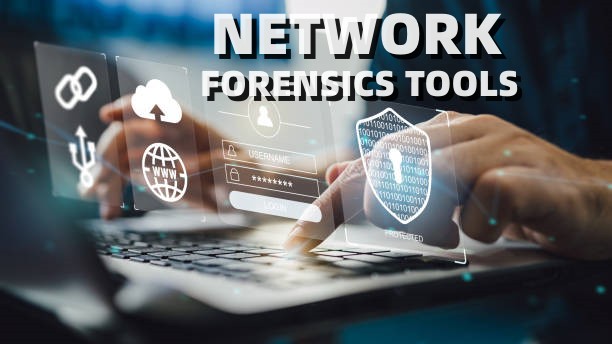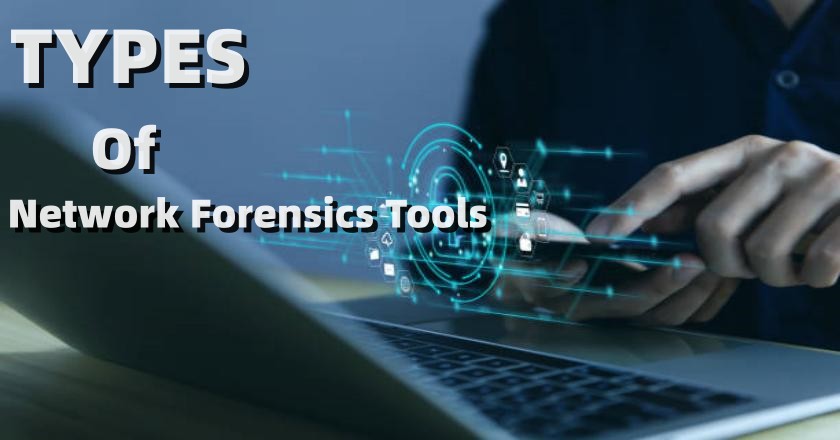The Ultimate Guide to Network Forensics Tools for 2025

-
Content
- What are Network Forensics Tools
- Types of Network Forensics Tools
- Top 10 Network Forensics Tools
- How Do Network Forensics Tools Work?
- Why Are Network Forensics Tools So Important?
- Things to Consider While Choosing Network Forensics Tools
- Summary
-
Content
- What are Network Forensics Tools
- Types of Network Forensics Tools
- Top 10 Network Forensics Tools
- How Do Network Forensics Tools Work?
- Why Are Network Forensics Tools So Important?
- Things to Consider While Choosing Network Forensics Tools
- Summary
What are Network Forensics Tools
Specialized software intended to observe, record, and examine network traffic is known as network forensic tools. By assisting professionals in sorting through data packets as they travel through a network, these technologies are essential to cybersecurity and forensic investigations.
1. Role in Forensic Investigations
These technologies aid in the detection of illegal system access or suspicious activity during forensic investigations. They enable specialists to extract data packets from pre-existing network records or in real time. Investigators can identify the origin of a cyberattack, compile proof, and sometimes even retrieve lost or stolen data by carefully examining this data.
2. Importance in Cybersecurity
Network forensics tools are essential in the field of cybersecurity. They provide real-time monitoring capabilities that notify system administrators of anomalous behavior in addition to vulnerability detection. This minimizes harm and stops data loss by enabling speedier reaction to possible threats.
These technologies provide detailed information on network activities, which helps with compliance with laws and regulations. Any modern business needs a robust security system, and the right technology may help protect critical client information or trade secret.
Network forensics tools are essential in today’s digital world because they can prevent and analyze cyber threats.
Types of Network Forensics Tools
Network forensics tools come in a wide range of varieties, each designed to fulfill a particular purpose in the field of digital investigations.
1. Smartphone Forensic Tools
These mobile forensics tools are designed to extract, analyze, and report digital evidence found on mobile devices. They delve into call logs, messages, emails, and app data, even if they’ve been deleted or encrypted. Their primary function is to breach the security protocols of mobile OSes to retrieve evidence.
2. Video Forensic Tools
These are engineered to enhance, analyze, and authenticate video footage. They work by clarifying blurry images, improving poor audio quality, and verifying the authenticity of video evidence. They’re crucial for investigations that rely on video data.Click here to get forensic download now!
3. Computer Forensic Tools
Designed for digital investigations on computers, these tools recover and analyze data found on hard drives and other storage devices. They can unearth deleted, encrypted, or damaged files and track detailed activity logs, providing a comprehensive analysis of computer-related incidents.
4. Database Forensic Tools
These tools are essential for examining databases. They detect and alert on unauthorized access, track changes, and can help in the recovery of lost or tampered data, providing a detailed audit trail of database activities.
5. Drone Forensic Tools
Specialized in extracting and analyzing data from drones, these tools uncover flight paths, images, or videos captured, providing insights into the drone’s usage and the data it may have been collecting.
6. Data Recovery Forensic Tools
These are life-savers in incidents of data loss, dedicated to recovering files, images, videos, emails, and other data from a variety of storage devices, even after they’ve been deleted, lost, or damaged.
Top 10 Network Forensics Tools
Network forensics requires robust tools for effective data analysis and threat mitigation. Here are the top 10 tools, highlighting their key features:
1. Wireshark
- Live data capture and offline analysis.
- Standard three-pane packet browser.
- Rich VoIP analysis.
- Decryption support for many protocols.
- Live capture and display filters.
2. Volatility
- Memory extraction and analysis.
- Supports investigation of hidden processes and malware.
- Extracts network information.
- Detailed system information retrieval (open files, registry data).
3. Encase
- Disk imaging and preservation.
- Comprehensive file parsing and analysis.
- Unearths deleted and hidden evidence.
- Detailed reporting capabilities.
4. X-Ways
- Disk cloning and imaging.
- Fast and robust file recovery.
- Simultaneous search and indexing.
- Registry and metadata analysis.
- An invaluable addition to digital forensic tools, thanks to its comprehensive data recovery capabilities
5. NMAP
- Network inventory, target profiling.
- Flexible scripting engine for custom checks.
- Port scanning and version detection.
- Host discovery and service detection
6. FTK
- Multi-threaded analysis, processing multiple evidence items.
- Integrated timeline analysis.
- Artifact parsing and analysis.
- Efficient search and filtering options.
7. VIP 2.0
- Supports various video surveillance brands.
- Logical and physical write-protection.
- Automated forensic reporting.
- Time calibration for accurate evidence.
Contact to apply for a Free Trial now!
8. MailXaminer
- Analyzes various email formats.
- Advanced search criteria.
- Email header analysis.
- Comprehensive reporting.
9. HackerCombat
- Real-time website scanning.
- Customizable alerting.
- Detailed vulnerability reports.
- Supports various CMS and server types.
10. XRY
- Mobile data extraction.
- Quick and secure data acquisition.
- Bypasses locks and access barriers.
- Analyzes apps, communications, and images/videos.
From live data capture to in-depth email analysis, each of these tools provides special functions that are essential for comprehensive network forensics investigations.
How Do Network Forensics Tools Work?
Network forensics tools are integral to cyber investigations, providing in-depth insights through sophisticated data analysis. To understand their efficacy, let’s delve into the detailed workings of three prominent tools:
1. Wireshark
This open-source tool is pivotal in network analysis. Wireshark scrutinizes network traffic in real-time, capturing data packets that traverse the network. By employing filters, users can narrow down data packet streams to inspect specific information, making it indispensable for identifying anomalous traffic, troubleshooting, and understanding network protocols.
2. Encase
Renowned for digital investigations, Encase operates by creating a forensic image of the drive, a bit-by-bit copy, ensuring the original source remains unaltered. It isolates user data from system files, employing hashing algorithms to verify data integrity, allowing investigators to search for, recover, and analyze deleted or hidden files, thereby preserving the chain of custody.
3. VIP 2.0
Tailored for video forensics, VIP 2.0 from SalvationDATA, identifies systems (DVR/NVR) through a deep scan, reconstructing lost or fragmented video files without altering original data. It’s pivotal for evidence preservation, employing write-protection to prevent data modification, and an integrated player transcoding various video formats, simplifying the forensic process.
In essence, these tools, through their unique methodologies, provide comprehensive insights and analysis capabilities critical for network forensics.
Why Are Network Forensics Tools So Important?
It is impossible to overestimate the significance of network forensics tools in the modern, digital world of rapid speed. The following list of main advantages highlights their importance:
1. Enhanced Security
By monitoring traffic in real time, these tools give another level of protection to a network. Administrators can take rapid action in response to real-time notifications concerning security threats or suspicious behavior.
2. Comprehensive Analysis
These tools give you an all inclusive way to look at the health of your network, from packet capturing to deep data analysis. They facilitate finding vulnerabilities and putting in place the required security measures.
3. Faster Problem Resolution
Security breaches and other problems like system failures may be identified and fixed more rapidly with the use of computer forensics tools. Doing so minimizes lost revenue and downtime.
4. Regulatory Compliance
Detailed data logging and reporting are frequently necessary to comply with industry-specific laws. This procedure is automated by network forensics technologies, which guarantees that you will comply with regulations without incident.
5. Streamlined Investigations
These tools are incredibly useful for collecting evidence in the event of a security incident. They assist law enforcement organizations in their investigations by being able to track the source of an assault.
6. Scalability
The networks and number of devices in modern enterprises are always growing. The solutions that network forensics tools provide can evolve with your company and meet your changing requirements.
7. Data Recovery
In the worst case scenario a data loss incident, for example these technologies can help with the recovery process. In many cases, digital forensic software can even be customized to meet specific recovery requirements.
To conclude, network forensics tools are invaluable for any company that values security and operational efficiency beyond just protecting. With cyber threats becoming more complex, these technologies are more important than ever.
Things to Consider While Choosing Network Forensics Tools
Selecting the appropriate network forensics tool is a crucial choice. Here are some things to consider:
1. Skill Level
Select a tool based on the experience and knowledge of your group. While many tools are more appropriate for specialists with certain talents, others are easily used by beginners.
2. Techniques Employed
Data mining, memory analysis, and packet capturing are just a few of the approaches used by different tools. Make sure the tool you choose fits your needs by learning what it has to offer.
3. Output Quality
Find tools that provide useful insights. It should provide exact and complete data for forensic investigations and real-time security monitoring.
4. Cost
Financial constraints cannot be ignored. Free open source forensic tools may not offer all the features you need. Commercial tools can be expensive despite their many uses.
5. Specific Focus
Certain tools are domain experts, such as those in online security, email analysis, and mobile forensics. Select a tool that addresses your main area of concern.
6. User-Friendly Interface
An easy tool interface reduces mistakes and expedites investigations, resulting in a more efficient procedure.
7. Vendor Support
Choose tools from suppliers who offer excellent customer service. When handling difficult problems or in an emergency, technical support may be quite helpful.
8. Level of Customization
A tool that has customizable features might be better suited to your unique needs. Verify whether you may add or delete features from the tool to suit your needs.
You may choose a network forensics tool that meets your needs and improves your security infrastructure by giving these considerations significant thought.
Summary
We have discussed the importance and features of network forensics tools in this post. These vital resources help firms protect their digital environments by acting as the foundation of cybersecurity operations. Our first lesson covered the basics of these instruments and their vital functions in cyber protection and forensic investigations.
Next, based on their functions, we investigated many kinds of these tools: from those made specifically for mobile forensics to those that specialize in data or video recovery. Along with insights into the top ten tools that are now in demand in the business, the piece also included information on each tool’s distinct capabilities that meet different demands.
Examples were used to illustrate the working processes of these tools and to show how they support both proactive and reactive security measures. We also talked about the importance of these technologies for contemporary enterprises. They provide a number of advantages, including improving security, supporting regulatory compliance, and providing businesses with a competitive edge.
Finally, we discussed the elements to consider when selecting these tools, such as the team’s skill level, the tool’s specialized emphasis, and pricing concerns.
The takeaway is clear: network forensics tools are necessary for every firm that is serious about security and data integrity, not only as optional extras.





